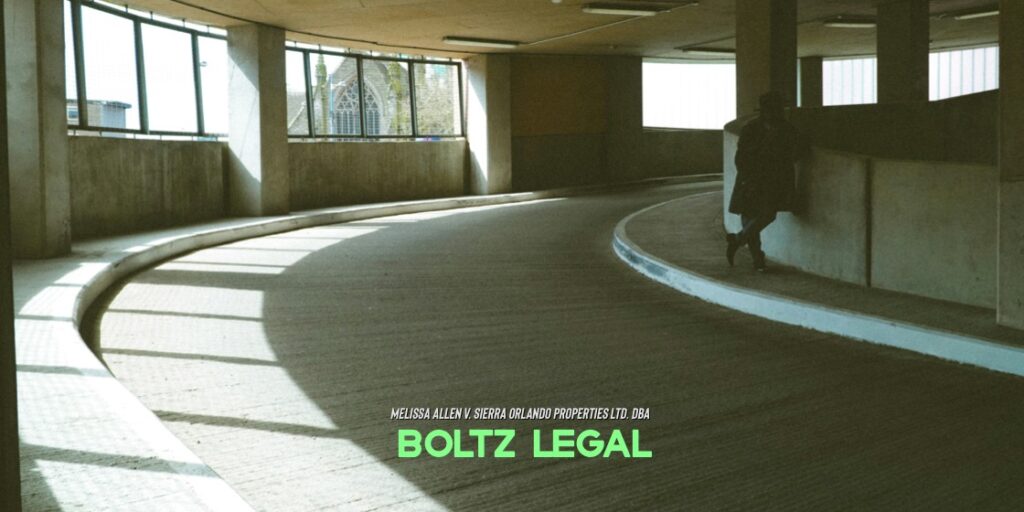Jurisdiction: Sixth District Court of Appeal, Florida
Case No.: 6D2023-2448
Lower Tribunal Case No.: 2018-CA-012533
Date: August 22, 2025
Lower Court: Circuit Court for Orange County, Judges Kevin B. Weiss and Margaret H. Schreiber
Premises Liability and the Scope of Landowner Duty: Landscaping Areas Not Meant for Foot Traffic
When Melissa Allen tripped and fell through the lid of an irrigation box in a grassy median at Caribe Royale Resort Suites, it sparked a legal question at the heart of many premises liability claims: What duty does a landowner owe to pedestrians who stray from designated walking areas?
The Sixth District Court of Appeal reversed a jury verdict in favor of Allen, ruling that Caribe Royale had no duty of care for areas clearly not meant for pedestrian use. The court’s ruling solidifies a core principle in Florida law: Landowners are not liable for injuries in areas not intended or designed for walking.
Facts of the Case: An Unintended Shortcut
Melissa Allen was attending a Future Farmers of America Convention with her daughter at Caribe Royale. After parking in the hotel’s lot, Allen chose to cross a grassy, unpaved median rather than use the adjacent sidewalk, which was only two parking spaces away.
The median was surrounded by a raised curb and had no signs inviting foot traffic. While walking, Allen stepped on a loose irrigation box lid that flipped open, causing her leg to drop into the hole beneath.
She filed a negligence claim against Caribe Royale, alleging that they failed to maintain or inspect the area or warn of hidden dangers. At trial, Allen relied on testimony that the grass appeared worn down and others had possibly used the path. A jury awarded her damages. But Caribe Royale consistently argued they owed no duty to pedestrians walking through landscaped medians not designed for foot traffic.
The Law: Defining “Duty” in Premises Liability
Under Florida law, landowners owe two primary duties to invitees:
- Maintain the property in a reasonably safe condition
- Warn of latent dangers not known to the invitee
However, this duty is limited to areas reasonably anticipated to be used by invitees. Florida courts have routinely held that landowners do not owe a duty to pedestrians who walk in areas not designed or intended for walking—including landscaping features, grassy medians, planter beds, and tree bases.
In this case, the appellate court emphasized that duty does not arise merely because others may have walked there before or because the grass was worn down. What matters is whether the landowner encouraged or intended pedestrian use of that area.
Key Legal Precedents Reinforced
This ruling aligns with other notable premises liability cases in Florida:
- TruGreen LandCare, LLC v. LaCapra – No duty owed for falls in landscaped areas not meant for walking
- Wolf v. Sam’s East, Inc. – A pedestrian shortcut through landscaping did not establish landowner liability
- Pio v. Simon Capital GP – Landowner not liable where pedestrian ignored proper paths and walked through a raised grassy area
In all these cases, including Allen’s, the court emphasized that landscaped areas are not inherently dangerous, but they are also not walkways—and landowners have no obligation to treat them as such.
Why Caribe Royale Prevailed
The court found that:
- The median was bordered by a raised curb, signaling no pedestrian invitation
- An adjacent paved sidewalk clearly served pedestrian traffic
- There were no features—like benches, trash cans, or signage—suggesting the grassy area was meant to be walked through
- Allen made a personal decision to walk through the median, which did not extend the landowner’s duty
Because Caribe Royale did not create a foreseeable zone of risk, they owed no legal duty to Allen in this specific circumstance.
Takeaway for Property Owners and Visitors
This decision underscores a crucial legal boundary:
Just because someone walks through a space doesn’t mean they were invited to do so.
For landowners, it means you are not liable for injuries in areas not designed for walking, especially when safer, intended paths exist nearby. For visitors, it’s a reminder to stick to designated walkways. Choosing a shortcut through landscaping may not just be risky—it could leave you without legal recourse.
For additional examples of how courts view pedestrian decisions in slip-and-fall cases, see:
🔗 Gwen Ortega v. JW Marriott Investment, LLC – Open and Obvious Doctrine
🔗 Open and Obvious Sidewalk Condition Bars Trip and Fall Claim
Today’s Insight
“The risk reasonably to be perceived defines the duty to be obeyed.”
— Justice Benjamin N. Cardozo, Palsgraf v. Long Island Railroad Co. (1928)
Cardozo’s timeless reminder is especially relevant here: duty flows from reasonably foreseeable risk. If the risk isn’t foreseeable, neither is the duty.

